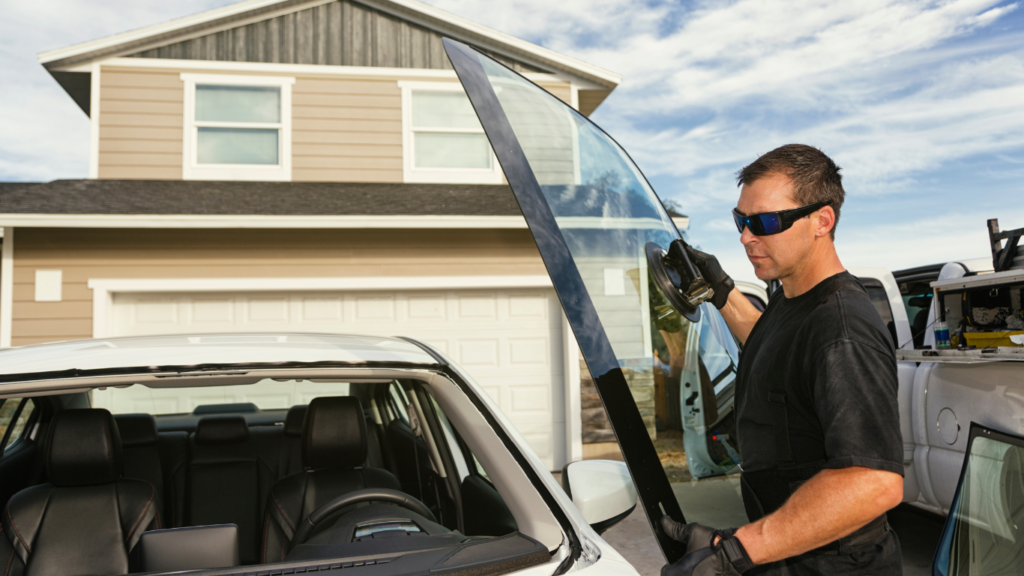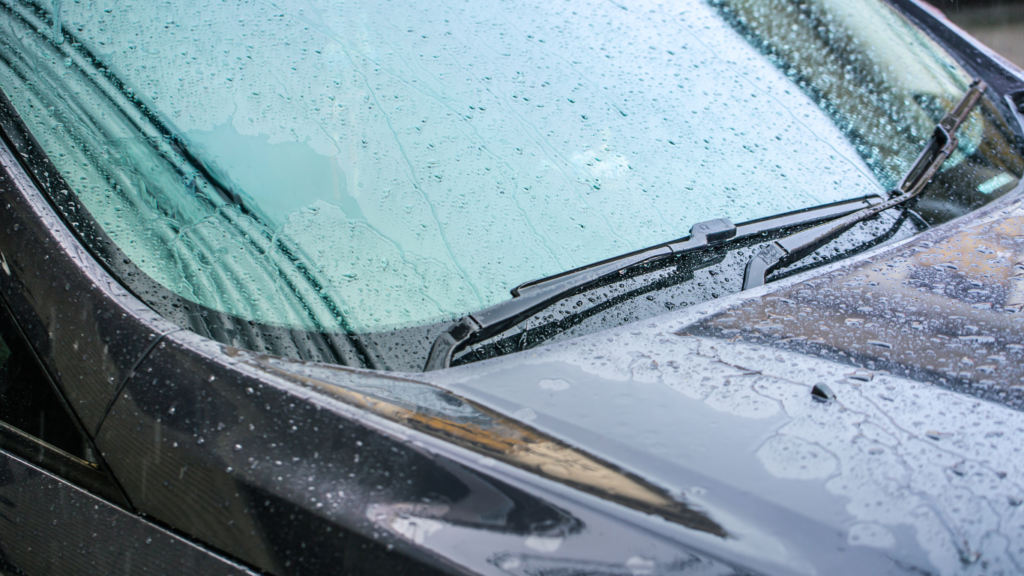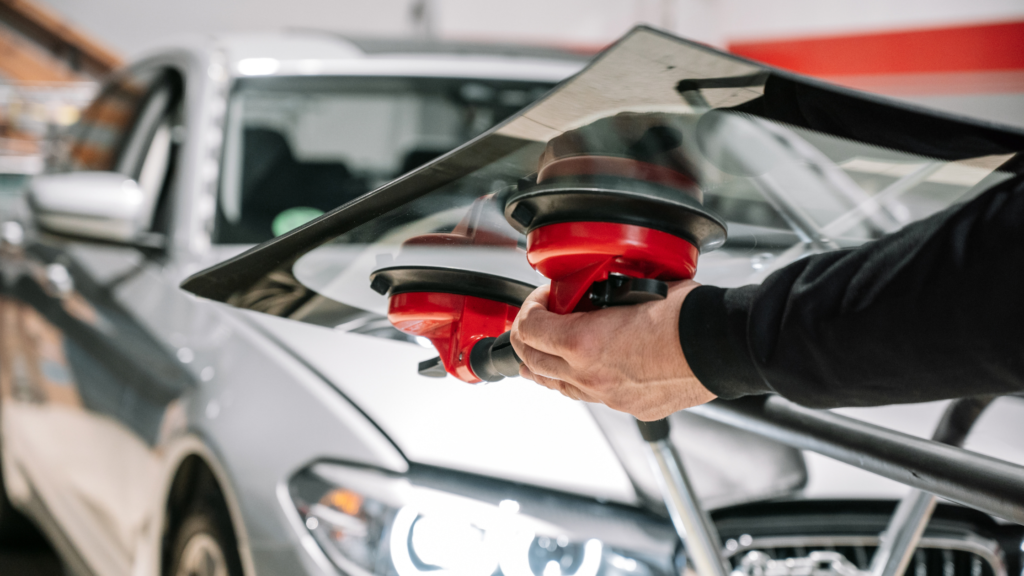Modern vehicles are equipped with Advanced Driver Assistance Systems (ADAS) that enhance safety, improve driving efficiency, and reduce the risk of accidents. These systems rely on a network of cameras, sensors, and radar technology to function properly.
However, if your windshield is replaced, the calibration of these systems can be disrupted, leading to inaccurate readings and potential safety risks.
Recalibrating ADAS after a windshield replacement is crucial to ensuring that your vehicle’s safety features continue to work correctly.
In this article, we will explore the importance of ADAS recalibration, how it works, and what could happen if it is neglected.
What is ADAS?
ADAS refers to a collection of technologies designed to assist drivers in avoiding collisions and improving overall road safety. These systems use a combination of cameras, sensors, and radar to detect surrounding vehicles, road markings, pedestrians, and potential hazards.
Some of the most common ADAS features include:
- Lane Departure Warning (LDW): Alerts the driver if the vehicle unintentionally drifts out of its lane.
- Adaptive Cruise Control (ACC): Automatically adjusts the vehicle’s speed to maintain a safe following distance.
- Forward Collision Warning (FCW): Warns the driver of an imminent collision with a vehicle or obstacle ahead.
- Automatic Emergency Braking (AEB): Applies the brakes if the system detects a potential collision.
- Blind Spot Monitoring (BSM): Detects vehicles in the driver’s blind spot and issues a warning.
- Traffic Sign Recognition (TSR): Reads road signs and displays relevant information to the driver.
Why Does Windshield Replacement Affect ADAS?
Many ADAS features rely on a front-facing camera mounted behind the windshield to accurately monitor the road. When a windshield is replaced, even a slight misalignment can cause the camera to provide inaccurate data, leading to malfunctioning safety features.
Here’s why recalibration is necessary:
Proper Functionality of Safety Features
A misaligned ADAS camera may fail to detect lane markings, vehicles, or obstacles correctly. This can lead to incorrect alerts, delayed responses, or complete failure of safety systems.
Compliance with Manufacturer Standards
Automakers have strict calibration guidelines for ADAS-equipped vehicles. Many state laws and insurance providers also require ADAS recalibration after windshield replacement to ensure compliance with safety regulations.
Preventing Accidents and Liabilities
A malfunctioning ADAS can increase the risk of accidents. If an improperly calibrated system contributes to a collision, the vehicle owner could be held liable for failing to ensure proper recalibration.

How is ADAS Recalibration Performed?
ADAS recalibration is a highly technical process that requires specialized tools and equipment.
There are two main types of recalibration:
1. Static Recalibration
- Performed in a controlled environment, such as a calibration center or repair shop.
- Uses manufacturer-specific targets and patterns to adjust the ADAS system.
- Ensures precise alignment without needing the vehicle to be driven.
2. Dynamic Recalibration
- Requires the vehicle to be driven on a road at specific speeds.
- Uses real-world conditions to allow ADAS cameras and sensors to self-calibrate.
- Typically involves a scan tool connected to the vehicle’s onboard diagnostic (OBD) system.
Some vehicles may require both static and dynamic recalibration to ensure accuracy.
What Happens if ADAS is Not Recalibrated?
Failing to recalibrate ADAS after a windshield replacement can lead to serious consequences, including:
Incorrect Warnings and Alerts
Your lane departure warning or forward collision warning may trigger false alarms or fail to activate when needed.
Reduced Driver Confidence
Drivers rely on ADAS for assistance, and a faulty system can create uncertainty and hesitation in critical situations.
Increased Accident Risk
A misaligned ADAS system can fail to detect road hazards, leading to an increased chance of crashes.
Legal and Insurance Issues
Some insurance providers require proof of ADAS recalibration after a windshield replacement. Failure to comply could impact insurance claims in the event of an accident.
How to Know If Your Vehicle Needs ADAS Recalibration
If your vehicle has undergone a windshield replacement, you may see a warning light or error message on the dashboard indicating that the system requires recalibration. However, even if no warning appears, recalibration should still be performed to prevent potential safety issues.
Additionally, you should consider ADAS recalibration if:
- Your vehicle was in an accident that affected the windshield or camera system.
- Your ADAS features are behaving abnormally (e.g., lane departure warning activating at the wrong time).
- You recently had suspension or wheel alignment adjustments, which can also impact camera calibration.

Who Should Perform ADAS Recalibration?
ADAS recalibration should always be performed by trained technicians using specialized calibration tools. Many auto glass repair shops, including Clearview Auto Glass Baltimore, offer professional recalibration services in addition to windshield replacement.
When choosing a service provider, look for:
Certified Technicians: Ensure the shop has trained professionals who follow manufacturer standards.
Advanced Equipment: The facility should have the necessary diagnostic tools and recalibration technology.
OEM-Compatible Procedures: Verify that they follow Original Equipment Manufacturer (OEM) guidelines to maintain accuracy.
How Much Does ADAS Recalibration Cost?
The cost of ADAS recalibration varies depending on the vehicle make, model, and recalibration method. On average:
- Static recalibration costs between $200–$500.
- Dynamic recalibration costs between $150–$300.
- Some vehicles require both, which can increase the cost.
Many insurance providers cover ADAS recalibration costs if it is required after a windshield replacement, so check with your insurer.
Conclusion: Prioritizing Safety with ADAS Recalibration
ADAS recalibration is a critical safety measure that ensures your vehicle’s driver-assist features work accurately. After a windshield replacement, recalibrating your lane departure warning, forward collision warning, and adaptive cruise control systems helps maintain safety, compliance, and driving confidence.
Ignoring ADAS recalibration can lead to serious risks, including faulty alerts, increased accident potential, and insurance complications. To protect yourself and others on the road, always choose a trusted auto glass service provider that offers professional ADAS recalibration.
If you’ve recently had a windshield replacement, and are located in the Baltimore area, schedule an ADAS recalibration with Clearview Auto Glass Baltimore today to ensure your safety systems are functioning properly!

